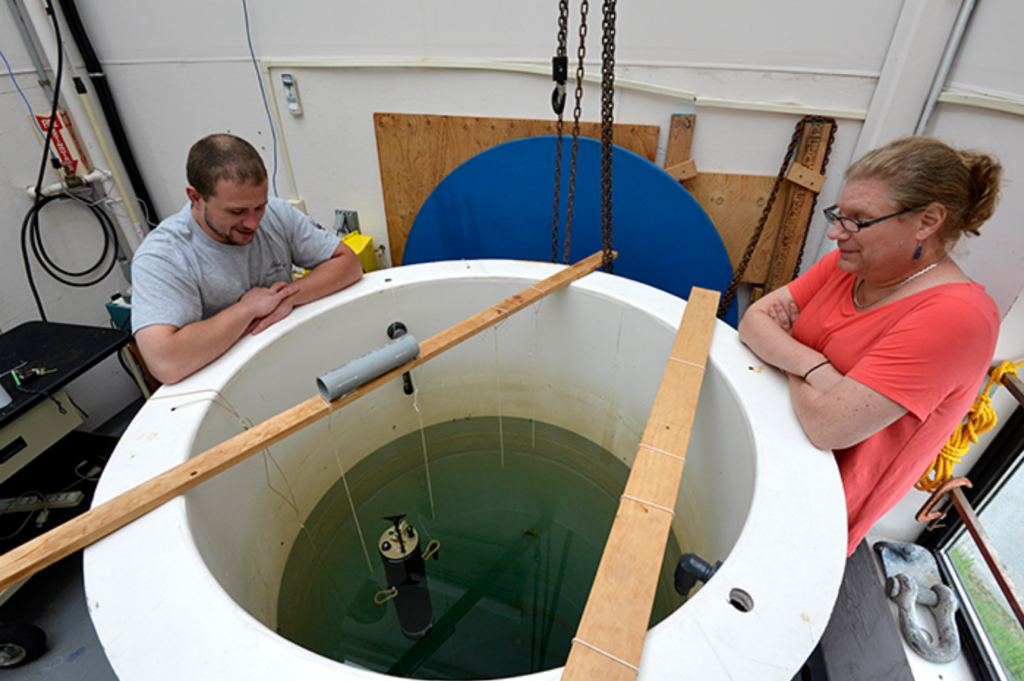Welcome to the WHOI Float Group

Float Group members test an Air-Launched Autonomous Micro Observer (ALAMO) float in a tank at WHOI. (Photo by Ken Kostel)
The Float Group at WHOI designs, tests, deploys, and analyzes data from a variety of autonomous profiling floats. These ocean robots can adjust their buoyancy by inflating or deflating an external bladder, thereby controlling their height in the water column as they collect data (temperature, salinity, pressure, etc.) A vertical series of measurements collected by a float as it rises in the water column is called a "profile". Floats are valuable oceanographic tools for many reasons, including:
- They can operate in parts of the ocean that are inaccessible or impractical for other in-situ measurement methods, like shipboard conductivity, temperature, depth (CTD) sensors
- Floats can be programmed to perform a wide range of mission cycles depending on the research focus (e.g. long-term climate trends versus individual storms)
- The operational lifespan of a float can last up to several years
- An antenna on top of each float allows them to transmit data via satellite whenever they surface, so the physical float does not need to be recovered to access data
- While most current floats measure temperature, salinity, and pressure, they can host sensors for many ocean variables, including oxygen, pH, nitrate, and chlorophyll